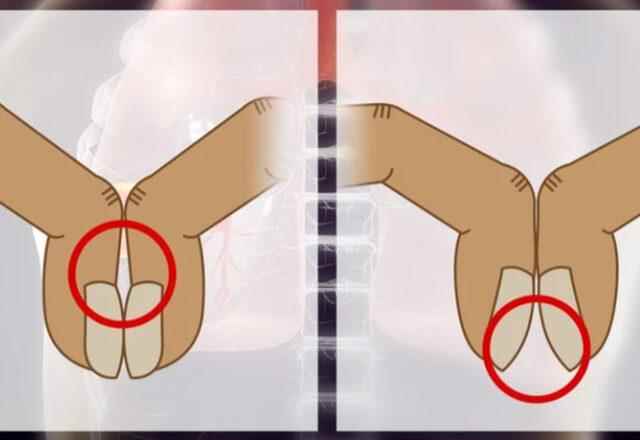Lung cancer ranks first among cancer-related deaths in both men and women. Because lung cancer does not show obvious symptoms, it can be difficult to detect early. Cough, shortness of breath, chest pain are among the symptoms. Many of these symptoms are considered minor, making it difficult to detect lung cancer early. According to research, testing with your fingers can help you detect lung cancer early.
CAN HELP YOU DIAGNOSE EARLY
The “diamond gap” finger test, also known as the Schamroth window test, can help detect lung cancer early. For this test, you need to bring your nails together to see if there is a diamond-shaped gap between your cuticles. If not, this indicates finger clubbing. Finger clubbing is the enlargement of the fingertips, causing the nails to curl.
PEOPLE WHO HAVE THIS DISEASE HAVE A HIGH RISK OF CAUGHT LUNG CANCER

It is a common symptom of lung cancer, occurring in more than 35 percent of people with the disease, according to Cancer Research UK. It’s worth noting that toe socks don’t necessarily mean you have lung cancer, and there are many reasons why your toes may look that way. Nail or finger clubbing can be the result of or inherited from many diseases, such as cystic fibrosis, heart disease, and other cancers. But lung cancer is responsible for about 80 to 90 percent of finger clubbing cases.
HOW IS THE TEST PERFORMED?

- Join the nails of your index fingers.
- Look for a small diamond-shaped space between your cuticles where the light comes in.
- If there is no gap and the nail beds are touching, this is a sign of finger clubbing.
- The tips of the fingers may be larger than normal, and the nails may be curved.
- Finger clubbing is thought to result from increased blood flow to the finger area.
WHAT ARE THE OTHER SYMPTOMS OF LUNG CANCER?
Not all people with lung cancer experience finger clubbing as a symptom. Other signs to watch out for are:
- cough most of the time
- Change in cough you have had for a long time
- Shortness of breath
- Cough with phlegm with signs of blood
- Aches or pains in the chest or shoulder
- Loss of appetite
- Tiredness
- weight loss
